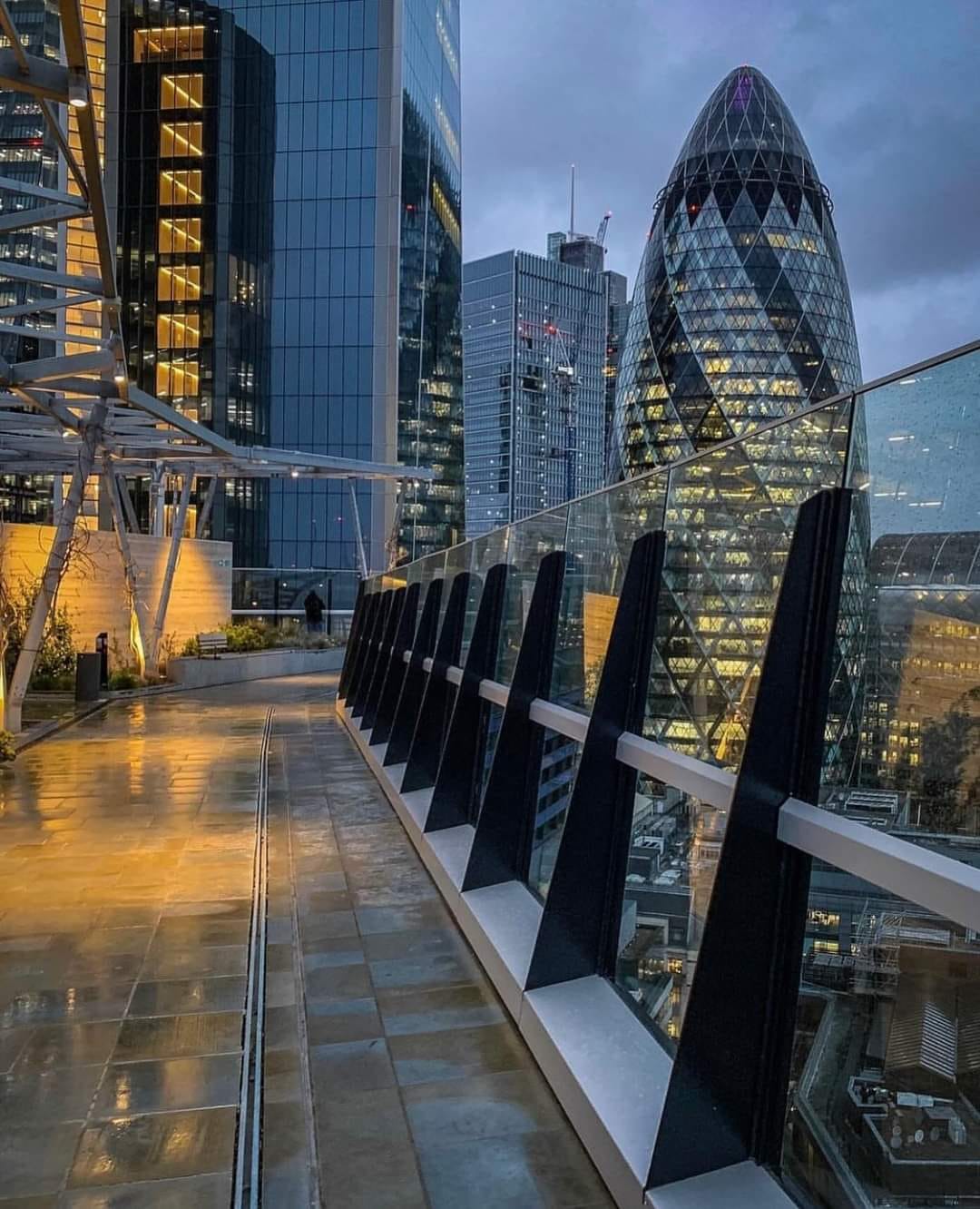Events
| Name | organizer | Where |
|---|---|---|
| MBCC “Doing Business with Mongolia seminar and Christmas Receptiom” Dec 10. 2024 London UK | MBCCI | London UK Goodman LLC |
NEWS

TDBM launches Apple Pay in Mongolia www.tghepayers.com
Trade & Development Bank of Mongolia (TDBM), the oldest in Mongolia, has become the first bank in the country to offer Apple Pay to its customers.
This milestone underscores the bank's commitment to providing modern and secure payment solutions, responding to the increasing demand for mobile payment options in the country.
Apple Pay, which expanded into Mongolia in early 2024, offers a secure, fast, and convenient way for users to make payments using their Apple devices. TDBM moved quickly to integrate this service, recognizing its potential to improve the user experience for its customers. The bank’s decision to introduce Apple Pay is aligned with its goal of enhancing financial accessibility and convenience for Mongolian consumers.
In order to make this integration possible, TDBM collaborated with Compass Plus Technologies, a payment technology provider. The two companies worked together to ensure a smooth and efficient rollout of Apple Pay, allowing TDBM customers to use the service for everyday transactions at a wide range of locations that accept Apple Pay worldwide.
Representatives TDBM, expressed satisfaction with the collaboration, emphasizing that adding Apple Pay was a vital step in improving convenience for customers. He highlighted that the service would allow users to make payments on the go, offering greater flexibility for both personal and business use.
Employing new technologies
TDBM's partnership with Compass Plus Technologies is part of the bank's broader strategy to stay ahead of the curve in the rapidly evolving payment landscape. As part of its long-standing relationship with Compass Plus, TDBM continues to adopt innovative technologies to meet the needs of its customers.
The bank, which has been serving Mongolian businesses and individuals since its establishment in 1990, offers a wide variety of banking services. By introducing Apple Pay, the bank is reinforcing its position as a leading player in the Mongolian financial sector while promoting digital payment solutions that are safe, efficient, and widely accessible. This move also reflects the bank's broader aim to support the growth of Mongolia's digital economy and enhance the overall financial experience for its users.
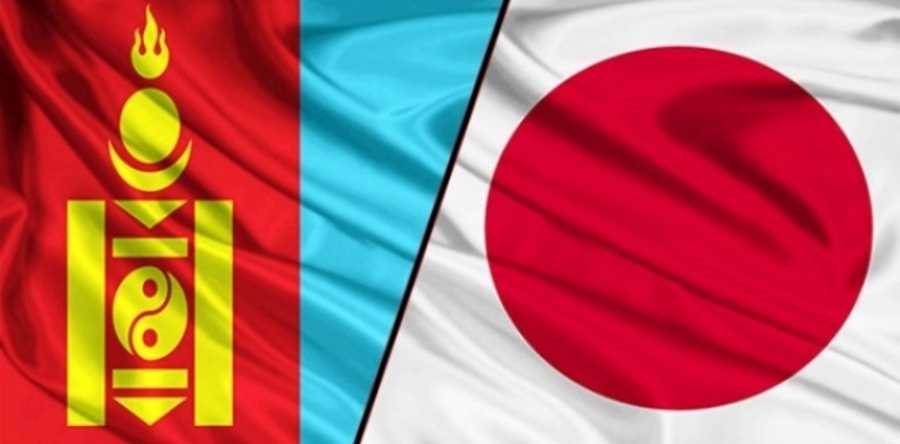
Signing of the Agreement between the Government of Japan and the Government of Mongolia concerning the Transfer of Defense Equipment and Technology www.mofa.go.jp
On December 11 in Mongolia, H.E. Mr. IGAWAHARA Masaru, Ambassador Extraordinary and Plenipotentiary of Japan to Mongolia, and H.E. Mr. Sandag BYAMBATSOGT, Minister of Defence of Mongolia, signed the Agreement between the Government of Japan and the Government of Mongolia concerning the Transfer of Defense Equipment and Technology (PDF)Open a New Window. The Agreement will enter into force after the completion of the necessary procedures between the governments of the two countries.
The Agreement establishes a legal framework for the Governments of Japan and Mongolia regarding the handling of defense equipment and technology to be transferred between the two governments in order to implement projects to be jointly determined including those contributing to international peace and stability. Specifically, it stipulates procedures to determine and confirm each specific transfer as well as basic rules on the proper use of the transferred defense equipment and technology.
The conclusion of this Agreement will ensure appropriate control over the defense equipment and technology transferred between Japan and Mongolia, especially regarding any subsequent transfer to a third party or any extra-purpose use. It is expected that this Agreement will contribute to closer cooperation between Japan and Mongolia for defense equipment and technology, and maintaining and improving the production and technological bases for Japan’s defense industry, thereby contributing to the security of Japan.
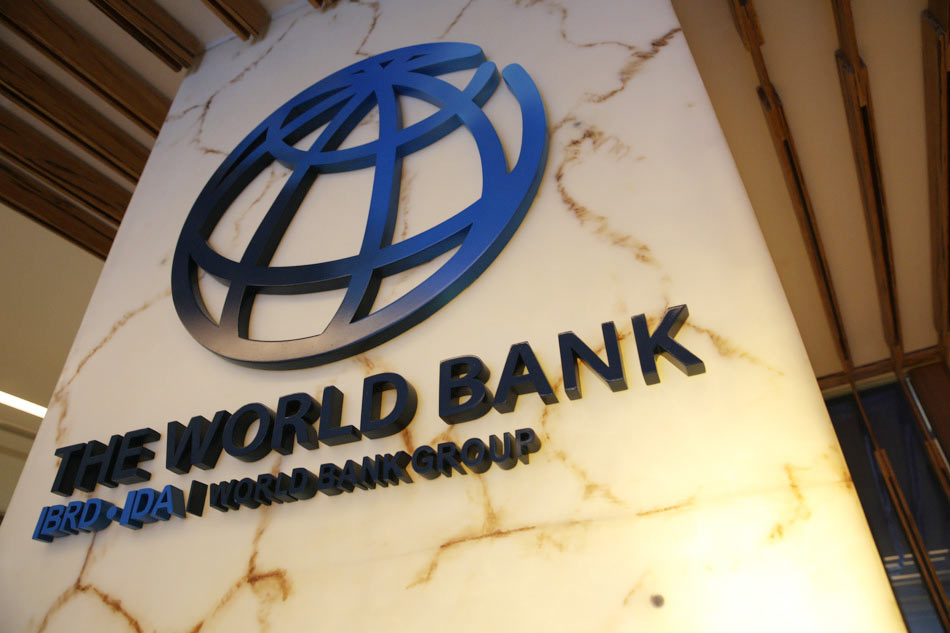
World Bank: Steps to Boost Mongolia's Finance, Private Sector www.miragenews.com
Two new reports published by the World Bank today offer policy options for strengthening Mongolia's financial sector and private sector, and recognize Mongolia's reform efforts and climate commitments. But they also highlight the need for better policy coordination and implementation across agencies to maximize impact.
"Creating a more efficient financial sector and a supportive environment for private investment can offer Mongolia significant development opportunities," said World Bank Country Manager for Mongolia Taehyun Lee. "A strategic, well-coordinated approach that aligns with sectoral policies will help the country achieve a more diversified, equitable and resilient development."
Building the Foundations for Financial Sector Development outlines comprehensive reforms Mongolia could adopt to address banking sector vulnerabilities and improve market development. It identifies steps policy makers could take to reform the country's legal and judicial system and strenghten its central bank in order to make it easier for banks to extend credit to the private sector, which fell from 60 percent of GDP in 2013 to 41 percent in 2022. New businesses, investments in assets, and access to credit for small and medium-sized enterprises (SME) also decreased over this period. Banks' reluctance to take risks reflects the high concentration of Mongolia's banking system, in which the top three banks hold about 80 percent of assets.
The report stresses the importance of strengthening the independence, governance, and oversight of the Bank of Mongolia. It calls for better sharing of credit information; improved enforcement of contracts, including through judicial decisions; and out-of-court workouts. It also suggests restarting the government securities issuance program, in order to create a liquid market for domestic government securities, which is essential for developing the domestic capital market and improving the foreign exchange market.
Meanwhile, Boosting Mongolia's Private Sector and Green Competitiveness proposes policy actions to increase productivity and private investment, especially outside the mining sector. It recommends three main strategies, including i) making regulations more predictable and reducing bureaucracy through digitalization; ii) improving the capabilities of SMEs (through quality certification and technology adoption, for example) to help them grow; and iii) supporting public-private efforts, in order to attract private investment in renewable energy, energy efficient production, and sustainable agribusiness.
/Public Release. This material from the originating organization/author(s) might be of the point-in-time nature, and edited for clarity, style and length. Mirage.News does not take institutional positions or sides, and all views, positions, and conclusions expressed herein are solely those of the author(s).View in full here.
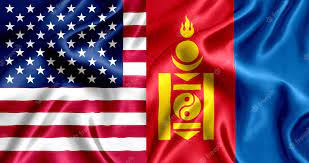
Peace Corps’ lasting impact on a Mongolian entrepreneur www.peacecorps.org
Mongolia’s northernmost province hosts one of the world’s clearest lakes, Lake Khuvsgul. It’s a popular vacation destination for Mongolians and other tourists. While soaking in the last days of summer 2024, Volunteers Darcy, Noa, and John enjoyed hospitality at a small camp on the lake's southwestern shore. They soon discovered that the camp’s owner and manager, Yadam Otgonbayar, known as “Otgoo,” was also a part of the Peace Corps family.
Otgoo was born in 1966 and grew up in a small village at the southern tip of Lake Khuvsgul. She eventually became a Russian language teacher.
In 1991 Mongolia was transitioning to democracy and initiated a partnership with the Peace Corps in order to educate its citizens in English. News of the arrival of foreign English teachers spread throughout the country.
A quest to learn English
Upon hearing the news, Otgoo asked her school director if she could leave to study English to become an English teacher. The director declined Otgoo’s request because she was the school’s only Russian teacher.
Otgoo, however, is not one to take “no” for an answer. She quit her job and traveled to Sukhbaatar, where Peace Corps Volunteer Paul Dewey was teaching. There she approached a school director and asked to live in a dorm room while attending English lessons. He agreed. Although the school dorm had no heating, Otgoo was determined to make it work.
For two years Otgoo studied under Paul. By day she attended English lessons, and at night she borrowed Paul’s teaching materials and taught the same lessons to a small group of students at the school where she was living. The tuition she collected from her students enabled her to buy food and other necessities.
From student to teacher
One day, while Otgoo was studying in her dorm room, Paul came by to tell her that the Peace Corps was hiring teachers to teach Mongolian to the next Peace Corps Trainee cohort. He encouraged Otgoo to apply, given her skill in English and enthusiasm for teaching. She decided to apply.
As part of the application process Otgoo taught an English lesson for the Peace Corps program manager to observe. Otgoo recalls watching her fellow applicants, who were all trained English teachers from Sukhbaatar. They knew their students well and had clearly rehearsed their lessons with their students.
When Otgoo's turn came, she proudly introduced herself to the students and showed a map of her home province. “Hello, I’m Otgoo. I’m from Khuvsgul. Do you know where Khuvsgul is?” During the rest of the lesson, Otgoo asked her students questions and described her life in the northern province. Later she learned that the Peace Corps program manager was also from Khuvsgul.
Otgoo was hired to be a language and culture facilitator (LCF) for the Peace Corps, where she worked with Trainees in 1993–1994. One of her students, Layton C., said, “I was blessed and grateful to have achieved advanced Mongolian language proficiency, in large part due to Otgoo’s inspiring teaching.”
Teaching university-level English
After finishing her second year as an LCF, Otgoo heard about an opportunity to teach English at the business and management university in Ulaanbaatar, about 200 miles south of Sukhbaatar. Although she was not a trained teacher, by then her English skills were strong. She came to the interview with some trepidation. When she walked into the interview room, she was surprised to see yet another Peace Corps former student, Frank D. Once again, Otgoo was, in her words, “a very lucky woman.” She got the job.
Otgoo taught many students at the business and management university, earned an MBA, and studied hospitality in Europe. However, economic conditions in Mongolia were difficult in the aftermath of the Soviet Union’s collapse.
Returning to Lake Khuvsgul as an entrepreneur
One day, Otgoo received a phone call from a former university student that she’d taught, then working for the provincial government in Khuvsgul. The government was looking for people to open new businesses. Otgoo had never owned a business and had no idea what sort of business she could start, but her former student immediately issued her a business-owner’s certificate and told her, “Go tell people in Khuvsgul that you’re a business owner, and they will help you.” So she did.
Otgoo returned to Khuvsgul as the new owner of a yet-to-be-developed ger (nomadic tents) camp. As backpackers trekked along the lake, Otgoo approached them for their business and asked them to spread the word. She offered them a place to sleep and a meal of fresh fish, which she caught in the lake.
Continuing to spread the Peace Corps spirit
Today, Otgoo is the proud owner of “Nature’s Door” ger camp on the southwest shore of Lake Khuvsgul. Nature’s Door has 12 gers, a restaurant, and a studio where Otgoo occasionally teaches English lessons to camp managers and local teachers. Otgoo manages a team of cooks, cleaners and security guards, whom she refers to as her “internal customers.” She feels her responsibility is to care for them and provide them with productive and meaningful jobs.
As more and more businesses establish themselves around the lake, Otgoo finds herself discouraged by the attitudes of local business owners who assume tourists are rich and have nothing to offer but money. Instead, she believes tourism should be seen as an opportunity to exchange cultures. Business owners and managers should focus on providing tourists with an authentic experience and improving the lives of their employees, just as Peace Corps did for her.

Mongolia reflects on gender equality progress ahead of Beijing+30 Review www.undp.org
At the conclusion of the 16 Days of Activism Against Gender-Based Violence, UNDP and the Ministry of Family, Labour and Social Protection, co-organized an inter-ministerial discussion on Mongolia’s national report for the Beijing Declaration and Platform for Action. The event brought together government officials and development partners to assess progress and outline the path forward in advancing gender equality.
The year 2025 marks the 30th anniversary of the Beijing Declaration and Platform for Action, adopted at the Fourth World Conference on Women in 1995. This landmark global framework, endorsed by 189 countries, remains pivotal in promoting gender equality and women’s empowerment. Addressing violence against women, one of the declaration’s 12 critical areas of concern, continues to be an urgent priority.
Mongolia’s national review, led by the Ministry of Family, Labour, and Social Protection with technical support from UNDP, identifies key lessons and actionable solutions to advance the objectives of the Beijing Declaration. These findings were presented at the Asia-Pacific Ministerial Conference on Beijing+30 in Bangkok in November 2024 and will contribute to global deliberations at the 69th Commission on the Status of Women in March 2025.
His Excellency Enkh-Amgalan Luvsantseren, Minister for Family, Labour and Social Protection of Mongolia, stated “The Beijing Declaration has been a guiding framework for Mongolia’s efforts to promote gender equality. This review is more than a report—it is a call to action. By enhancing inter-ministerial coordination, we can accelerate progress and fulfill our commitments to the women and girls of Mongolia.”
Ms. Matilda Dimovska, UNDP Resident Representative in Mongolia, emphasized UNDP’s commitment: “UNDP is proud to support Mongolia in this crucial review of the Beijing Declaration. The findings present a clear roadmap for future actions and partnerships that will drive progress toward gender equality and ensure that no one is left behind.”
Ms. Cai Cai, Chief of the Gender Equality and Social Inclusion Section, Social Development Division at UN ESCAP, highlighted the broader regional context: “The Asia-Pacific region’s progress on the Beijing Declaration demonstrates the power of regional collaboration. Mongolia’s proactive approach provides a compelling example of how national priorities can align with global objectives for gender equality.”
The inter-ministerial discussion reaffirmed the critical role of collaborative efforts in addressing gender-based violence and advancing gender equality in alignment with the Beijing Declaration’s vision.
About UNDP
UNDP is the leading United Nations organization fighting to end the injustice of poverty, inequality, and climate change. Working with our broad network of experts and partners in 170 countries, we help nations to build integrated, lasting solutions for people and planet.
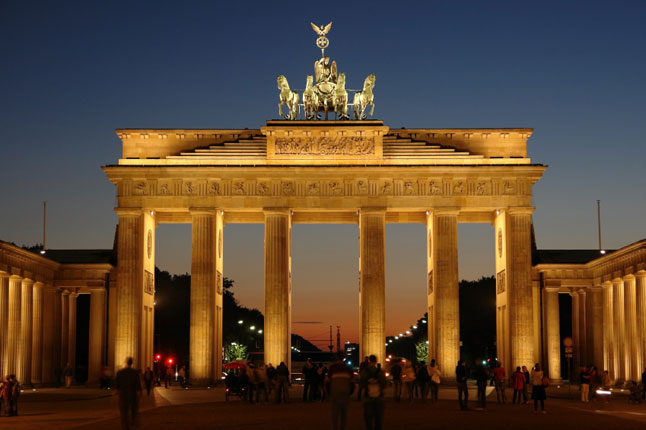
Germany and Mongolia Convert €29 Million Debt into Public Health Investments with Global Fund Support www.theglobalfund.org
The Federal Republic of Germany, through KfW Development Bank, and the government of Mongolia, through the Ministry of Finance, signed today a landmark agreement to convert €29 million of Mongolia’s debt into public health investments. With the new funds, Mongolia will enhance access to TB care, improve case detection and treatment, and expand HIV services for key and vulnerable populations. The country will also use the investment to transition to a more integrated and efficient health system.
The agreement was signed under the Global Fund’s Debt2Health initiative [ download in English | Español | Français ] , an innovative financing mechanism designed to encourage domestic financing for health by converting debt repayments into lifesaving investments in public health programs. Under individually negotiated “debt swap” agreements, a creditor nation foregoes repayment of a loan when the beneficiary nation agrees to invest all or part of the freed-up resources into a Global Fund-supported program.
Germany – the second largest European donor to the Global Fund and the fourth largest public donor overall – has been the leading supporter of the Global Fund’s Debt2Health mechanism, both in piloting the concept in 2007 and in supporting the scheme as a creditor in multiple subsequent transactions.
The G20 Joint Finance and Health Task Force actively supports such debt-for-health swap arrangements as part of a broader strategy to strengthen health financing in low- and middle-income countries, addressing debt burdens and improving pandemic preparedness and universal health coverage.
Javkhlan Bold, Minister of Finance of Mongolia, said: “This debt conversion agreement exemplifies Mongolia’s commitment to strengthening its health systems and achieving lasting health outcomes. With the support of Germany and the Global Fund, we can address critical health needs in our communities and enhance the resilience of our health sector.”
Helmut Kulitz, Ambassador of the Federal Republic of Germany to Mongolia, said: “This debt conversion is a new and innovative element in our cooperation with Mongolia. By redirecting resources towards Mongolia’s health priorities, we are enabling sustainable development and strengthening national resilience. This is a significant contribution to the country-wide improvement of Mongolia’s health system.”
Frank Bohnet, Director of KfW Development Bank, said: “The signing of this debt swap agreement marks a significant step in our long-standing and trustful financial cooperation with Mongolia. This project reflects our commitment to support Mongolia in enhancing its health care services and ensuring that affected people receive necessary treatment and support.”
Peter Sands, Executive Director of the Global Fund, said: “Debt2Health is a transformative mechanism that strengthens health financing and improves access to care. We commend Germany and Mongolia for their leadership in leveraging innovative financing to tackle infectious diseases like tuberculosis and HIV, while also enhancing pandemic preparedness. We hope this inspires other countries to explore similar approaches to advance global health.”
Since its inception in 2007, the Debt2Health mechanism has generated close to US$330 million in health funding. Debt swap agreements have involved a range of countries, including Australia, Germany and Spain on one side; and Cameroon, Côte d’Ivoire, Democratic Republic of Congo, Egypt, El Salvador, Ethiopia, Indonesia, Jordan, Mongolia, Pakistan and Sri Lanka on the other side.
The Global Fund is committed to continue developing and implementing practical, innovative finance mechanisms to increase the impact against the three diseases. These solutions complement government spending and amplify domestic health financing.
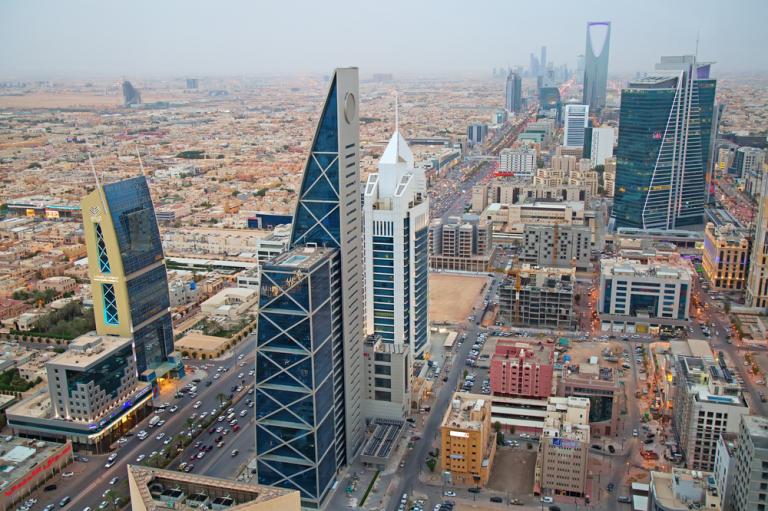
Gulf nations interested in critical minerals exploration, says Mongolian Prime Minister www.thenationalnews.com
Gulf states want to be part of Mongolia's critical mineral exploration as they look to build supply chains for commodities essential to the energy transition, the country's prime minister has told The National.
Luvsannamsrai Oyun-Erdene visited the UAE, Saudi Arabia, and Bahrain last week to deepen economic ties with the region, particularly in mining, renewable energy and infrastructure.
The landlocked nation between China and Russia has been building diplomatic and economic relationships with countries other than Russia and China, its two biggest trade partners.
“The governments of the Gulf countries have expressed their interest to work with us on geological survey and mapping of critical minerals so that we can co-operate on exploration projects,” Mr Oyun-Erdene said.
“We have abundant resources of minerals. As for the Gulf countries, they have the know-how and the technology, especially in energy.”
Mongolia, a major coking coal and copper exporter primarily to China, aims to expand its exploration of new deposits of critical minerals, including nickel, lithium, and rare earths. The Oyu Tolgoi project, which is majority-owned by mining company Rio Tinto, is expected to become the world's fourth-largest copper mine by output by 2030.
Critical minerals such as copper, lithium, nickel and cobalt are crucial to support the growth of clean energy technology, including wind turbines, power grids and electric vehicles.
The UAE and Saudi Arabia have been exploring or investing in mining projects in Africa and Latin America, regions abundant in critical minerals. They are also prioritising the development of domestic processing capabilities to reduce reliance on foreign suppliers and add value to their economies.
Mr Oyun-Erdene said that the Gulf and Mongolia could also partner on energy transition projects and the construction of satellite cities in Mongolia.
On Saturday, Masdar hosted a Mongolian delegation led by Mr Oyun-Erdene to discuss collaboration on renewable energy, sustainable development, and expertise sharing to strengthen bilateral trade ties, the Abu Dhabi-based clean energy company said in a post on X. The official also met with Abu Dhabi’s sovereign wealth funds.
“It is very important for Mongolia to learn from the best practices and good experiences of these countries … and the Gulf countries have also expressed their interest to co-operate with us on satellite cities,” Mr Oyun-Erdene said.
Mongolia is actively developing satellite cities around its capital, Ulaanbaatar, which is home to about half of the country’s population. A major city is the planned Khushigt Valley project, which will be able to accommodate 150,000 people by 2040, as per local media reports.
Deal with India
President Sheikh Mohamed met Luvsannamsrain Oyun-Erdene, Prime Minister of Mongolia at Al Shati Palace. Abdulla Al Bedwawi / UAE Presidential Court
Last month, Reuters reported that India is in talks with Mongolia to set up a preliminary pact that will focus on mineral shipments between the two countries. The pact will focus on the transit of minerals such as coal and copper, it said.
“We are in talks with the government of India on exporting coking coal,” Mr Oyun-Erdene said but did not reveal further details.
A rise in global coking coal trade last year was largely driven by Mongolia, which more than doubled its exports during the year to about 54 million tonnes, according to the International Energy Agency.
China is the main buyer of Mongolian coal. A new railway between Talvan Tolgoi in southern Mongolia and Gashuunsukhait-Gantzmod on the Chinese border became operational in late 2022, significantly boosting Mongolia's capacity to export coal to the world’s second-largest economy and top steel manufacturing country.
Mongolia is “very active in terms of foreign policy, and we are co-operating with many countries around the world”, Mr Oyun-Erdene said.
Last year, France and Mongolia signed a $1.7 billion agreement to develop the Zuuvch-Ovoo uranium mine in south-west Mongolia. The project, led by the French nuclear company Orano, aims to secure uranium supplies for France, which is heavily reliant on nuclear power plants, while also contributing to Mongolia's economic growth.
Mr Oyun-Erdene said that both countries would soon finalise an investment agreement, paving the way for construction to begin.
Economic growth
Mongolia’s economy is expected to record strong growth next year, driven by continued expansion of coal and copper mining. Last month, the International Monetary Fund raised its forecast for Mongolia's economic growth next year to 7 per cent from 6 per cent, positioning the country as one of the world's fastest-growing economies.
Mr Oyun-Erdene is confident that Mongolia will be able to “maintain” its economic growth despite a slowdown in China, its largest trading partner.
“In the near future, we are working to open more export border ports to export to China, so I'm confident that this will facilitate more trade between our two countries and increase the size of our products going to China,” he said.
“So, no matter the economic situation in the world and China, we are confident that we can maintain the economic indicators.”

Copper price jumps on China policy, but we’ve been here before www.mining.com
Copper jumped on Monday, rising by more than 2% overnight to a four-week high of $4.30 per pound ($9,470 per tonne) on the CME in Chicago, after China’s politburo signalled for the first time since 2008 it is abandoning its “prudent” monetary policy stance.
But optimism about the impact of a “moderately loose” policy and promises of “vigorously boosting consumption” faded in afternoon trade with March futures giving up some gains towards the end of regular trading.
The bellwether metal spiked at the end of September after similar positive noises about economic stimulus from Beijing, but remains down nearly 10% since then.
In a new note, London-based researcher Capital Economics warned that ”monetary easing in China is far less potent than it used to be [and] there is now limited appetite among households and large parts of the private sector to take on more debt, even at lower rates.”
Capital Economics says that with monetary policy effects likely to be underwhelming, Beijing’s fiscal policy would have to do the heavy lifting: “Our calculations suggest that the share of on-budget spending being devoted to investment is on course to hit its highest since 1987 this year.”
Rising fixed investment in China on this scale is an unalloyed good for metals markets and especially copper given its widespread use in industry, manufacturing and construction.
Even so, Capital Economics in a September research report argued that a correction in Chinese construction activity “will be as large as 50% decline from peak to trough” and that most of the correction still lies ahead:
“While the green transition and Al-related use will boost demand for industrial metals over the rest of this decade, we expect this to largely be offset by a substantial contraction in demand from China’s construction sector.
“Against this backdrop, and with supply proving resilient, we forecast copper and aluminum prices to fall in the coming years and be below consensus expectations during the 2020s.”
Capital Economics forecasts copper would lose touch with the $9,000 a tonne level next year, average only $8,000 by the end of 2026, and continue to drift lower through 2030.
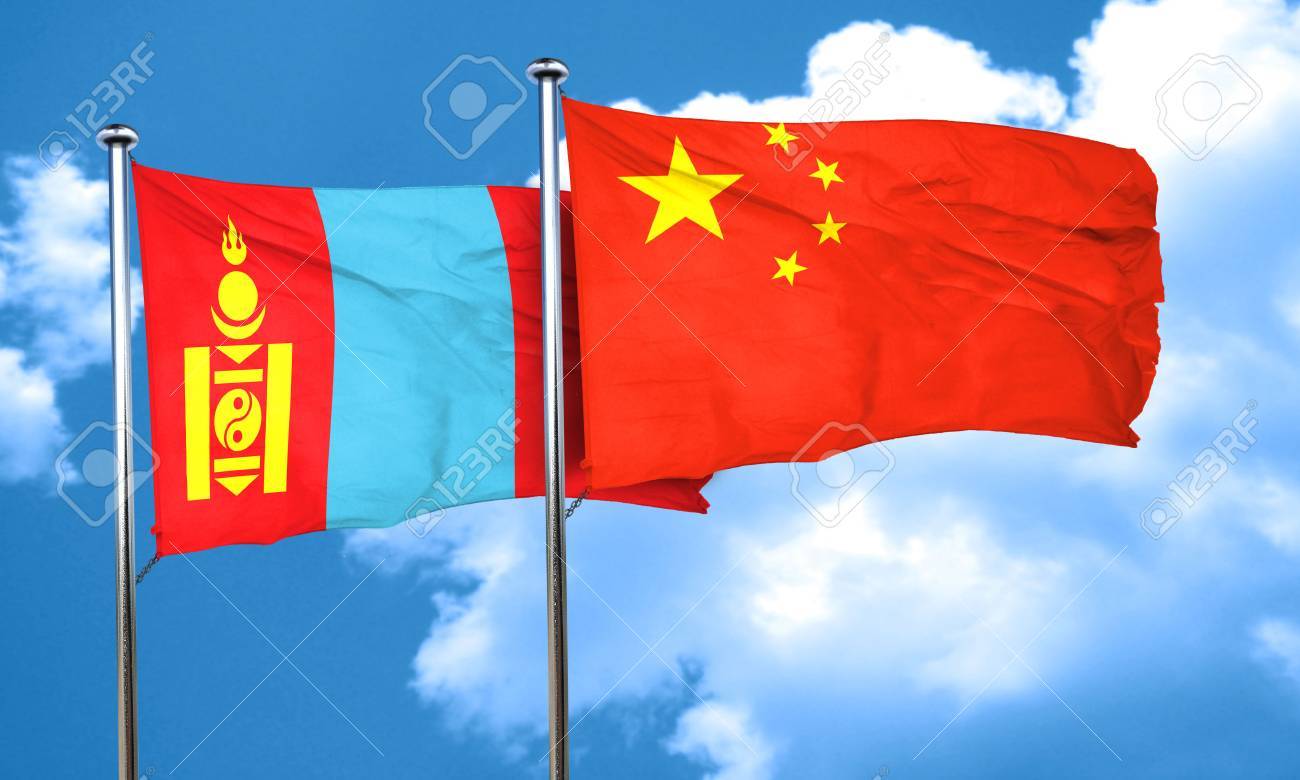
Major Ulaanbaatar Projects Presented to Attract Chinese Investment and Cooperation www.montsame.mn
Authorities of Ulaanbaatar held the “UB Opportunity” investment forum in Beijing, China to draw investments to major construction, energy, and transport projects to be implemented in the capital of Mongolia in the coming years.
Around 450 representatives from 204 entities engaged in the infrastructure, energy, and investment sectors took part in the forum, where the capital officials led by the Governor of the Capital City of Mongolia and Mayor of Ulaanbaatar Nyambaatar Khishgee presented the projects.
Mayor Nyambaatar thanked the representatives of business entities and organizations who attended the event and said, “The Government of Mongolia revised the Law on Public-Private Partnerships and the law came into force since the beginning of this year. In line with the law, Ulaanbaatar authority strives to stimulate public-private partnerships to expand the city's economy. We intend to cooperate with foreign and domestic enterprises in the energy and infrastructure sectors. Therefore, we would like to invite representatives of Chinese enterprises taking part in today's event to actively participate in the tenders to be announced within the framework of the key projects to be implemented in Ulaanbaatar City and strengthen cooperation between Mongolia and China.
The Mayor of Ulaanbaatar highlighted metro and highway construction projects. "In the coming years, one of the high-capacity multi-modal vehicles to be introduced into the capital's public transport is the metro. The metro route will be from Amgalan to Tolgoit with a length of 17.7 km, having 14 stations. The feasibility study for the project's management consulting services is 70 percent complete. The average speed of traffic is estimated to increase by 48 percent with the construction of the metro. In addition, public transport will be diversified to reduce road congestion in Ulaanbaatar City. For example, the preliminary feasibility study for a tram that can transport a large number of people in a short time will be completed by February next year. One vertical line will be built by the first quarter of next year. The route of the line will run 20.4 km from Zunjin Shopping Center to Sukhbaatar Square and will have 23 stations. The introduction of the tram will increase the average speed of traffic by 22 percent. In addition, the first expressway within the capital will be built. The tender for the four-lane Tuul Expressway, a 33-kilometer-long box girder structure, will be announced by December. Once the expressway is put into operation, the average speed of traffic will increase by 13.5 percent, and the throughput of vehicles passing through the Darkhan and Zamiin-Uud directions will improve."
The consulting service provider for a two-ring expressway to reduce traffic congestion within the city has been selected, and the feasibility study will be fully developed in 2025. The construction of the highway will increase the throughput of the main streets and intersections of the city center, and the average speed of traffic will increase by 27 percent. Meanwhile, the tender for the construction of a new bridge connecting the Tuul Expressway with the Nisekh road will be announced next year to begin the construction work, according to Mayor Nyambaatar.
At the end of the presentation, investors clarified the projects and programs of interest and exchanged ideas on cooperation, expressing their willingness to cooperate in the construction of trams, bridges, and highways, based on their experience, technology, and know-how.
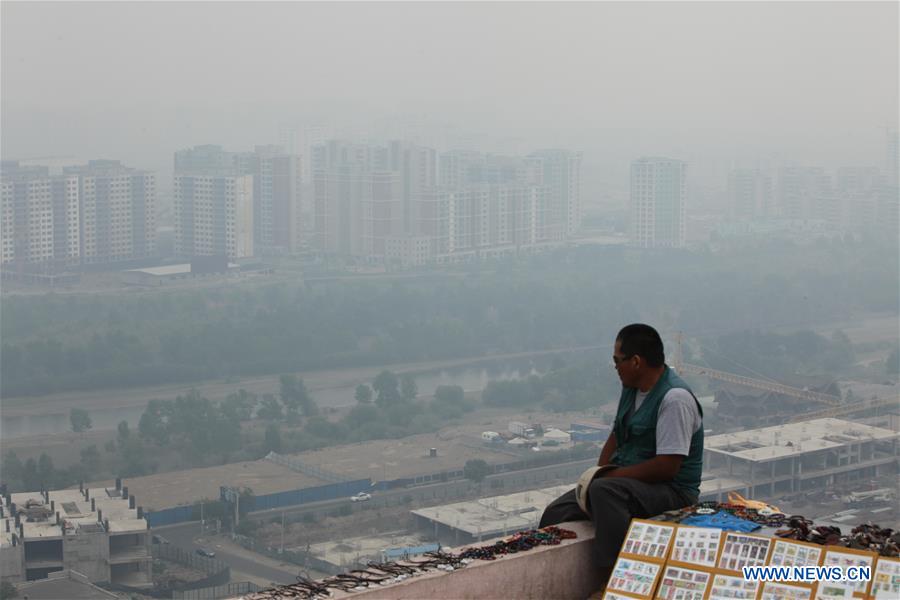
300 Mongolians Die Due to Air Pollution-Related Illnesses Annually www.insidemongolia.mn
In Mongolia, almost 90% of the country’s energy supply is consumed for heating purposes, with coal dominating as the primary energy source. While it keeps homes warm during the brutal winters, this reliance on coal has unleashed a public health and environmental crisis, contributing to severe greenhouse gas emissions and staggering air pollution levels.
The Cost of Breathing
Each year, 300 Mongolians die due to air pollution-related illnesses, including 240 children under 5. On the coldest winter days, Ulaanbaatar's PM2.5 levels soar to an alarming 687 micrograms per cubic meter, 27 times above the World Health Organization's recommended safe limit. The capital city is ranked 2nd globally on the list of most polluted cities, and the classification "Very Unhealthy" barely scratches the surface of the problem.
This pollution isn’t just choking the air. It’s eroding the health of Mongolia’s population. Respiratory diseases, cancer, mental health decline, and neurological damage are only part of the toll.
The economic translation? Indoor air pollution alone costs Mongolia ₮47 billion in annual health expenditures, while the broader environmental damage from pollution tallies up to ₮360 billion annually. Cumulatively, the economic loss equals a staggering ₮3.9 trillion or 7.6% of Mongolia’s GDP.
The Urban Factor
Nearly half the population lives in Ulaanbaatar, packed into 0.3% of Mongolia’s territory. Of these, 53% reside in ger districts, where raw coal burning generates 70%–80% of the city’s air pollution.
The government introduced charcoal briquettes in 2018 through Tavantolgoi Fuel LLC. While this initiative promised cleaner air, Mongolians are still breathing toxic smog six years later. The incremental improvements have been far from sufficient.
Hollow promises: Prime Minister L.Oyun-Erdene’s remark, “Nobody expected that we could reduce air pollution within a year by 50%. Our lungs testify to it,” feels painfully ironic. For many, toxic air continues to exacerbate stillbirths, pneumonia, asthma, and nerve damage, overshadowing any proclaimed progress.
A Wake-Up Call
Mongolia’s reliance on coal and its insufficient policy responses are a glaring reminder of the cost of short-term solutions. For the world, Ulaanbaatar serves as a cautionary tale of how unchecked urbanization and outdated energy policies can create a health and economic catastrophe. For Mongolians, it’s an urgent call to demand sustainable solutions that prioritize clean energy, health, and the environment. Ulaanbaatar’s toxic air serves as a grim reminder, “Every breath is a plea for change”.
- «
- 1
- 2
- 3
- 4
- 5
- 6
- 7
- 8
- 9
- 10
- 11
- 12
- 13
- 14
- 15
- 16
- 17
- 18
- 19
- 20
- 21
- 22
- 23
- 24
- 25
- 26
- 27
- 28
- 29
- 30
- 31
- 32
- 33
- 34
- 35
- 36
- 37
- 38
- 39
- 40
- 41
- 42
- 43
- 44
- 45
- 46
- 47
- 48
- 49
- 50
- 51
- 52
- 53
- 54
- 55
- 56
- 57
- 58
- 59
- 60
- 61
- 62
- 63
- 64
- 65
- 66
- 67
- 68
- 69
- 70
- 71
- 72
- 73
- 74
- 75
- 76
- 77
- 78
- 79
- 80
- 81
- 82
- 83
- 84
- 85
- 86
- 87
- 88
- 89
- 90
- 91
- 92
- 93
- 94
- 95
- 96
- 97
- 98
- 99
- 100
- 101
- 102
- 103
- 104
- 105
- 106
- 107
- 108
- 109
- 110
- 111
- 112
- 113
- 114
- 115
- 116
- 117
- 118
- 119
- 120
- 121
- 122
- 123
- 124
- 125
- 126
- 127
- 128
- 129
- 130
- 131
- 132
- 133
- 134
- 135
- 136
- 137
- 138
- 139
- 140
- 141
- 142
- 143
- 144
- 145
- 146
- 147
- 148
- 149
- 150
- 151
- 152
- 153
- 154
- 155
- 156
- 157
- 158
- 159
- 160
- 161
- 162
- 163
- 164
- 165
- 166
- 167
- 168
- 169
- 170
- 171
- 172
- 173
- 174
- 175
- 176
- 177
- 178
- 179
- 180
- 181
- 182
- 183
- 184
- 185
- 186
- 187
- 188
- 189
- 190
- 191
- 192
- 193
- 194
- 195
- 196
- 197
- 198
- 199
- 200
- 201
- 202
- 203
- 204
- 205
- 206
- 207
- 208
- 209
- 210
- 211
- 212
- 213
- 214
- 215
- 216
- 217
- 218
- 219
- 220
- 221
- 222
- 223
- 224
- 225
- 226
- 227
- 228
- 229
- 230
- 231
- 232
- 233
- 234
- 235
- 236
- 237
- 238
- 239
- 240
- 241
- 242
- 243
- 244
- 245
- 246
- 247
- 248
- 249
- 250
- 251
- 252
- 253
- 254
- 255
- 256
- 257
- 258
- 259
- 260
- 261
- 262
- 263
- 264
- 265
- 266
- 267
- 268
- 269
- 270
- 271
- 272
- 273
- 274
- 275
- 276
- 277
- 278
- 279
- 280
- 281
- 282
- 283
- 284
- 285
- 286
- 287
- 288
- 289
- 290
- 291
- 292
- 293
- 294
- 295
- 296
- 297
- 298
- 299
- 300
- 301
- 302
- 303
- 304
- 305
- 306
- 307
- 308
- 309
- 310
- 311
- 312
- 313
- 314
- 315
- 316
- 317
- 318
- 319
- 320
- 321
- 322
- 323
- 324
- 325
- 326
- 327
- 328
- 329
- 330
- 331
- 332
- 333
- 334
- 335
- 336
- 337
- 338
- 339
- 340
- 341
- 342
- 343
- 344
- 345
- 346
- 347
- 348
- 349
- 350
- 351
- 352
- 353
- 354
- 355
- 356
- 357
- 358
- 359
- 360
- 361
- 362
- 363
- 364
- 365
- 366
- 367
- 368
- 369
- 370
- 371
- 372
- 373
- 374
- 375
- 376
- 377
- 378
- 379
- 380
- 381
- 382
- 383
- 384
- 385
- 386
- 387
- 388
- 389
- 390
- 391
- 392
- 393
- 394
- 395
- 396
- 397
- 398
- 399
- 400
- 401
- 402
- 403
- 404
- 405
- 406
- 407
- 408
- 409
- 410
- 411
- 412
- 413
- 414
- 415
- 416
- 417
- 418
- 419
- 420
- 421
- 422
- 423
- 424
- 425
- 426
- 427
- 428
- 429
- 430
- 431
- 432
- 433
- 434
- 435
- 436
- 437
- 438
- 439
- 440
- 441
- 442
- 443
- 444
- 445
- 446
- 447
- 448
- 449
- 450
- 451
- 452
- 453
- 454
- 455
- 456
- 457
- 458
- 459
- 460
- 461
- 462
- 463
- 464
- 465
- 466
- 467
- 468
- 469
- 470
- 471
- 472
- 473
- 474
- 475
- 476
- 477
- 478
- 479
- 480
- 481
- 482
- 483
- 484
- 485
- 486
- 487
- 488
- 489
- 490
- 491
- 492
- 493
- 494
- 495
- 496
- 497
- 498
- 499
- 500
- 501
- 502
- 503
- 504
- 505
- 506
- 507
- 508
- 509
- 510
- 511
- 512
- 513
- 514
- 515
- 516
- 517
- 518
- 519
- 520
- 521
- 522
- 523
- 524
- 525
- 526
- 527
- 528
- 529
- 530
- 531
- 532
- 533
- 534
- 535
- 536
- 537
- 538
- 539
- 540
- 541
- 542
- 543
- 544
- 545
- 546
- 547
- 548
- 549
- 550
- 551
- 552
- 553
- 554
- 555
- 556
- 557
- 558
- 559
- 560
- 561
- 562
- 563
- 564
- 565
- 566
- 567
- 568
- 569
- 570
- 571
- 572
- 573
- 574
- 575
- 576
- 577
- 578
- 579
- 580
- 581
- 582
- 583
- 584
- 585
- 586
- 587
- 588
- 589
- 590
- 591
- 592
- 593
- 594
- 595
- 596
- 597
- 598
- 599
- 600
- 601
- 602
- 603
- 604
- 605
- 606
- 607
- 608
- 609
- 610
- 611
- 612
- 613
- 614
- 615
- 616
- 617
- 618
- 619
- 620
- 621
- 622
- 623
- 624
- 625
- 626
- 627
- 628
- 629
- 630
- 631
- 632
- 633
- 634
- 635
- 636
- 637
- 638
- 639
- 640
- 641
- 642
- 643
- 644
- 645
- 646
- 647
- 648
- 649
- 650
- 651
- 652
- 653
- 654
- 655
- 656
- 657
- 658
- 659
- 660
- 661
- 662
- 663
- 664
- 665
- 666
- 667
- 668
- 669
- 670
- 671
- 672
- 673
- 674
- 675
- 676
- 677
- 678
- 679
- 680
- 681
- 682
- 683
- 684
- 685
- 686
- 687
- 688
- 689
- 690
- 691
- 692
- 693
- 694
- 695
- 696
- 697
- 698
- 699
- 700
- 701
- 702
- 703
- 704
- 705
- 706
- 707
- 708
- 709
- 710
- 711
- 712
- 713
- 714
- 715
- 716
- 717
- 718
- 719
- 720
- 721
- 722
- 723
- 724
- 725
- 726
- 727
- 728
- 729
- 730
- 731
- 732
- 733
- 734
- 735
- 736
- 737
- 738
- 739
- 740
- 741
- 742
- 743
- 744
- 745
- 746
- 747
- 748
- 749
- 750
- 751
- 752
- 753
- 754
- 755
- 756
- 757
- 758
- 759
- 760
- 761
- 762
- 763
- 764
- 765
- 766
- 767
- 768
- 769
- 770
- 771
- 772
- 773
- 774
- 775
- 776
- 777
- 778
- 779
- 780
- 781
- 782
- 783
- 784
- 785
- 786
- 787
- 788
- 789
- 790
- 791
- 792
- 793
- 794
- 795
- 796
- 797
- 798
- 799
- 800
- 801
- 802
- 803
- 804
- 805
- 806
- 807
- 808
- 809
- 810
- 811
- 812
- 813
- 814
- 815
- 816
- 817
- 818
- 819
- 820
- 821
- 822
- 823
- 824
- 825
- 826
- 827
- 828
- 829
- 830
- 831
- 832
- 833
- 834
- 835
- 836
- 837
- 838
- 839
- 840
- 841
- 842
- 843
- 844
- 845
- 846
- 847
- 848
- 849
- 850
- 851
- 852
- 853
- 854
- 855
- 856
- 857
- 858
- 859
- 860
- 861
- 862
- 863
- 864
- 865
- 866
- 867
- 868
- 869
- 870
- 871
- 872
- 873
- 874
- 875
- 876
- 877
- 878
- 879
- 880
- 881
- 882
- 883
- 884
- 885
- 886
- 887
- 888
- 889
- 890
- 891
- 892
- 893
- 894
- 895
- 896
- 897
- 898
- 899
- 900
- 901
- 902
- 903
- 904
- 905
- 906
- 907
- 908
- 909
- 910
- 911
- 912
- 913
- 914
- 915
- 916
- 917
- 918
- 919
- 920
- 921
- 922
- 923
- 924
- 925
- 926
- 927
- 928
- 929
- 930
- 931
- 932
- 933
- 934
- 935
- 936
- 937
- 938
- 939
- 940
- 941
- 942
- 943
- 944
- 945
- 946
- 947
- 948
- 949
- 950
- 951
- 952
- 953
- 954
- 955
- 956
- 957
- 958
- 959
- 960
- 961
- 962
- 963
- 964
- 965
- 966
- 967
- 968
- 969
- 970
- 971
- 972
- 973
- 974
- 975
- 976
- 977
- 978
- 979
- 980
- 981
- 982
- 983
- 984
- 985
- 986
- 987
- 988
- 989
- 990
- 991
- 992
- 993
- 994
- 995
- 996
- 997
- 998
- 999
- 1000
- 1001
- 1002
- 1003
- 1004
- 1005
- 1006
- 1007
- 1008
- 1009
- 1010
- 1011
- 1012
- 1013
- 1014
- 1015
- 1016
- 1017
- 1018
- 1019
- 1020
- 1021
- 1022
- 1023
- 1024
- 1025
- 1026
- 1027
- 1028
- 1029
- 1030
- 1031
- 1032
- 1033
- 1034
- 1035
- 1036
- 1037
- 1038
- 1039
- 1040
- 1041
- 1042
- 1043
- 1044
- 1045
- 1046
- 1047
- 1048
- 1049
- 1050
- 1051
- 1052
- 1053
- 1054
- 1055
- 1056
- 1057
- 1058
- 1059
- 1060
- 1061
- 1062
- 1063
- 1064
- 1065
- 1066
- 1067
- 1068
- 1069
- 1070
- 1071
- 1072
- 1073
- 1074
- 1075
- 1076
- 1077
- 1078
- 1079
- 1080
- 1081
- 1082
- 1083
- 1084
- 1085
- 1086
- 1087
- 1088
- 1089
- 1090
- 1091
- 1092
- 1093
- 1094
- 1095
- 1096
- 1097
- 1098
- 1099
- 1100
- 1101
- 1102
- 1103
- 1104
- 1105
- 1106
- 1107
- 1108
- 1109
- 1110
- 1111
- 1112
- 1113
- 1114
- 1115
- 1116
- 1117
- 1118
- 1119
- 1120
- 1121
- 1122
- 1123
- 1124
- 1125
- 1126
- 1127
- 1128
- 1129
- 1130
- 1131
- 1132
- 1133
- 1134
- 1135
- 1136
- 1137
- 1138
- 1139
- 1140
- 1141
- 1142
- 1143
- 1144
- 1145
- 1146
- 1147
- 1148
- 1149
- 1150
- 1151
- 1152
- 1153
- 1154
- 1155
- 1156
- 1157
- 1158
- 1159
- 1160
- 1161
- 1162
- 1163
- 1164
- 1165
- 1166
- 1167
- 1168
- 1169
- 1170
- 1171
- 1172
- 1173
- 1174
- 1175
- 1176
- 1177
- 1178
- 1179
- 1180
- 1181
- 1182
- 1183
- 1184
- 1185
- 1186
- 1187
- 1188
- 1189
- 1190
- 1191
- 1192
- 1193
- 1194
- 1195
- 1196
- 1197
- 1198
- 1199
- 1200
- 1201
- 1202
- 1203
- 1204
- 1205
- 1206
- 1207
- 1208
- 1209
- 1210
- 1211
- 1212
- 1213
- 1214
- 1215
- 1216
- 1217
- 1218
- 1219
- 1220
- 1221
- 1222
- 1223
- 1224
- 1225
- 1226
- 1227
- 1228
- 1229
- 1230
- 1231
- 1232
- 1233
- 1234
- 1235
- 1236
- 1237
- 1238
- 1239
- 1240
- 1241
- 1242
- 1243
- 1244
- 1245
- 1246
- 1247
- 1248
- 1249
- 1250
- 1251
- 1252
- 1253
- 1254
- 1255
- 1256
- 1257
- 1258
- 1259
- 1260
- 1261
- 1262
- 1263
- 1264
- 1265
- 1266
- 1267
- 1268
- 1269
- 1270
- 1271
- 1272
- 1273
- 1274
- 1275
- 1276
- 1277
- 1278
- 1279
- 1280
- 1281
- 1282
- 1283
- 1284
- 1285
- 1286
- 1287
- 1288
- 1289
- 1290
- 1291
- 1292
- 1293
- 1294
- 1295
- 1296
- 1297
- 1298
- 1299
- 1300
- 1301
- 1302
- 1303
- 1304
- 1305
- 1306
- 1307
- 1308
- 1309
- 1310
- 1311
- 1312
- 1313
- 1314
- 1315
- 1316
- 1317
- 1318
- 1319
- 1320
- 1321
- 1322
- 1323
- 1324
- 1325
- 1326
- 1327
- 1328
- 1329
- 1330
- 1331
- 1332
- 1333
- 1334
- 1335
- 1336
- 1337
- 1338
- 1339
- 1340
- 1341
- 1342
- 1343
- 1344
- 1345
- 1346
- 1347
- 1348
- 1349
- 1350
- 1351
- 1352
- 1353
- 1354
- 1355
- 1356
- 1357
- 1358
- 1359
- 1360
- 1361
- 1362
- 1363
- 1364
- 1365
- 1366
- 1367
- 1368
- 1369
- 1370
- 1371
- 1372
- 1373
- 1374
- 1375
- 1376
- 1377
- 1378
- 1379
- 1380
- 1381
- 1382
- 1383
- 1384
- 1385
- 1386
- 1387
- 1388
- 1389
- 1390
- 1391
- 1392
- 1393
- 1394
- 1395
- 1396
- 1397
- 1398
- 1399
- 1400
- 1401
- 1402
- 1403
- 1404
- 1405
- 1406
- 1407
- 1408
- 1409
- 1410
- 1411
- 1412
- 1413
- 1414
- 1415
- 1416
- 1417
- 1418
- 1419
- 1420
- 1421
- 1422
- 1423
- 1424
- 1425
- 1426
- 1427
- 1428
- 1429
- 1430
- 1431
- 1432
- 1433
- 1434
- 1435
- 1436
- 1437
- 1438
- 1439
- 1440
- 1441
- 1442
- 1443
- 1444
- 1445
- 1446
- 1447
- 1448
- 1449
- 1450
- 1451
- 1452
- 1453
- 1454
- 1455
- 1456
- 1457
- 1458
- 1459
- 1460
- 1461
- 1462
- 1463
- 1464
- 1465
- 1466
- 1467
- 1468
- 1469
- 1470
- 1471
- 1472
- 1473
- 1474
- 1475
- 1476
- 1477
- 1478
- 1479
- 1480
- 1481
- 1482
- 1483
- 1484
- 1485
- 1486
- 1487
- 1488
- 1489
- 1490
- 1491
- 1492
- 1493
- 1494
- 1495
- 1496
- 1497
- 1498
- 1499
- 1500
- 1501
- 1502
- 1503
- 1504
- 1505
- 1506
- 1507
- 1508
- 1509
- 1510
- 1511
- 1512
- 1513
- 1514
- 1515
- 1516
- 1517
- 1518
- 1519
- 1520
- 1521
- 1522
- 1523
- 1524
- 1525
- 1526
- 1527
- 1528
- 1529
- 1530
- 1531
- 1532
- 1533
- 1534
- 1535
- 1536
- 1537
- 1538
- 1539
- 1540
- 1541
- 1542
- 1543
- 1544
- 1545
- 1546
- 1547
- 1548
- 1549
- 1550
- 1551
- 1552
- 1553
- 1554
- 1555
- 1556
- 1557
- 1558
- 1559
- 1560
- 1561
- 1562
- 1563
- 1564
- 1565
- 1566
- 1567
- 1568
- 1569
- 1570
- 1571
- 1572
- 1573
- 1574
- 1575
- 1576
- 1577
- 1578
- 1579
- 1580
- 1581
- 1582
- 1583
- 1584
- 1585
- 1586
- 1587
- 1588
- 1589
- 1590
- 1591
- 1592
- 1593
- 1594
- 1595
- 1596
- 1597
- 1598
- 1599
- 1600
- 1601
- 1602
- 1603
- 1604
- 1605
- 1606
- 1607
- 1608
- 1609
- 1610
- 1611
- 1612
- 1613
- 1614
- 1615
- 1616
- 1617
- 1618
- 1619
- 1620
- 1621
- 1622
- 1623
- 1624
- 1625
- 1626
- 1627
- 1628
- 1629
- 1630
- 1631
- 1632
- 1633
- 1634
- 1635
- 1636
- 1637
- 1638
- 1639
- 1640
- 1641
- 1642
- 1643
- 1644
- 1645
- 1646
- 1647
- 1648
- 1649
- 1650
- 1651
- 1652
- 1653
- 1654
- 1655
- 1656
- 1657
- 1658
- 1659
- 1660
- 1661
- 1662
- 1663
- 1664
- 1665
- 1666
- 1667
- 1668
- 1669
- 1670
- 1671
- 1672
- 1673
- 1674
- 1675
- 1676
- 1677
- 1678
- 1679
- 1680
- 1681
- 1682
- 1683
- 1684
- 1685
- 1686
- 1687
- »

